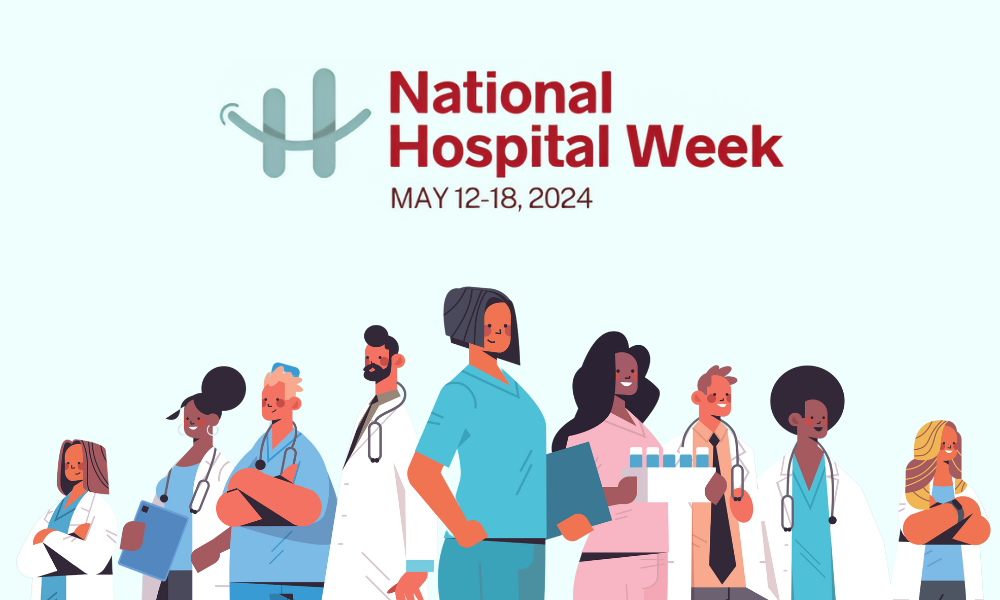Locums Digest is Locumpedia’s roundup of hot topics, top stories, and social media posts of interest to the locum tenens and medical communities. Subscribe to our newsletter to receive Locums Digest before it’s published here.
Pent-Up Demand, Need for Staffing Flexibility Should Help Fuel Locums, Telehealth Growth
(Edited from April 7 blog post by Alisa Tank @weatherbyhealthcare.com)
As the pandemic recedes, many physicians and advanced practice providers (APPs) likely will seek new career opportunities. For those who lost their jobs as routine and elective procedures were postponed — or for those who are burned out or in need of a pace change after a stressful year locum tenens offers a way to continue practicing on their own terms.- Meanwhile, healthcare facilities recovering from COVID-related disruptions will adapt and change. Weatherby Healthcare President Luke Woodyard predicts higher locums demand and suggests why many healthcare organizations are rethinking their staffing models.
A Growing Provider Shortage
The demand for healthcare providers has never been higher. As facilities continue reopening and elective procedures resume, facilities will need additional clinicians to provide care.
Growing demand and a relatively static pool of clinicians entering the workforce annually are among the biggest factors that will affect the locum tenens market in the coming years, Woodyard says. “There aren’t enough medical schools or educators, and we’ve seen flat growth as far as numbers of providers coming out of school. Combine that with an aging population that will increasingly need medical services, and there’s going to be an increased demand for providers with relatively the same supply.”
The distribution of physicians and APPs is also causing staffing shortages in rural areas. “There aren’t enough providers in the right places to meet the demand. Typically, fewer physicians want to go to rural health centers, where some of the greatest need exists,” Woodyard notes.
The provider shortage amplifies other issues that affect staffing such as provider burnout, and retirements, and more insured patients, Woodyard says, creating the perfect storm for increased provider demand. This likely will translate into locum tenens opportunities as organizations look for flexible ways to stretch their workforces.
Higher Demand for Some Specialties
Some specialties are especially in short supply. Woodyard expects to see increased demand for pulmonologists, cardiologists, oncologists, psychiatrists, and higher acuity specialties.
As elective and non-emergent procedures come back, he expects more locums jobs in hospitals, surgical centers, and outpatient settings. There’s enough pent-up demand that we’ll see an increased need in surgical specialties in the coming months; they’re going to need additional help, not only for the patient load, but for the well-being of their existing staff,” he says.
“There’s enough pent-up demand that we’ll see an increased need in surgical specialties in the coming months; they’re going to need additional help, not only for the patient load, but for the well-being of their existing staff,” he says.
More Patients Seeking Care
Woodyard expects patient numbers to increase in the coming year. “Many people stopped seeing their doctors in the past year over concerns about the pandemic, and because of that many of these ailments have gotten worse,” he says. “A lot of facilities don’t know what that demand is going to look like when it does come back, and that’s where locums can play an important role.”
Woodyard also expects to see patient increases because of changes to the Affordable Care Act that could boost enrollment. “When the ACA began, demand shot up and stayed up for a while. As coverage is offered to more individuals again, I think we’ll see the same trend,” he says.
Changing Healthcare Staffing Models
Following big swings in patient demand during the pandemic, many organizations are rethinking the way they handle their clinician workforces.
“They’re learning that flexibility makes sense for a portion of their staffing model,” says Woodyard. “During the pandemic, a lot of staff providers were laid off or had a reduction in hours. The advantage of temporary staffing is being able to supplement and not have to lay people off or hire based on the influx of demand. That flexibility helps them meet the needs of not only the community and their patients, but also their revenue stream.”
He says organizations are also considering using more locum tenens advanced practice providers — like PAs and NPs —to help provide coverage. “They’re highly trained and skilled, and while it’s not a replacement for physicians, it’s a complement that can help ensure patients get the care they need. I think these professions are going to thrive over the next decade.”
Locums as a Remedy to Burnout
Finally, Woodyard says locums is a way providers practice medicine without burning out. “Through locums they can increase their skill set, have different experiences, and go to different locations. It’s a great way to avoid burnout or recover from it.”
He notes it’s also a great way to control how much or how little they want to work. “We know there’s this pent-up demand, and locums offers either full or part-time work. And for those physicians who were furloughed and lost income last year, it’s a great way to earn additional income on the side,” he says.
While Woodyard anticipates the overall demand for healthcare providers may still have some volatility over the next few months, he believes demand for locum providers will continue to rise. The locum tenens market outlook is positive for those who want to give locums a try.
All News Is Locums
CHG Healthcare Survey: Less Career Satisfaction, More Burnout
(Edited from CHG news release and SIA Daily News, 4/7/2021)
A recent CHG Healthcare survey found that 40% of physicians, nurse practitioners, physician assistants and registered nurses felt their career satisfaction had been negatively affected by the COVID-19 pandemic. Additionally, 80% of healthcare providers said they felt some level of burnout before the pandemic. Sixty-four percent said the pandemic had made their sense of burnout worse.
The survey sought to discover how the pandemic affected healthcare providers career plans, career satisfaction, burnout and future plans.
Other key survey findings included:
- Healthcare facilities’ responses to the pandemic were good.
While the pandemic affected providers’ attitudes negatively, most (69%) felt their employers did a good job responding. Also, most felt their jobs were secure (75%), they had sufficient PPE (75%), and safety protocols were being followed (70%). - Providers felt understaffed, underpaid and unheard.
While the general pandemic response was positive, many providers felt their employers got it wrong in some areas: When asked their top three concerns about employers’ response, ‘insufficient staffing levels’ topped the list, followed by ‘dissatisfaction with compensation and inefficient work processes.’ Additionally, 22% said their employers didn’t listen to them and 26% said they didn’t agree with their employers’ decisions. - Some providers will look for new jobs post-pandemic.
Even considering the drop in career satisfaction and the increased burnout COVID-19 caused, the survey found most providers planned to continue working in their current roles. However, that loyalty changed once 2021, and potentially the pandemic, was over. Those indicating they were unlikely to stay in their current roles jumped from 13% to 24% when asked if they would continue in their current roles beyond 2021.
View the full survey report here.
Locum Tenens Staffing Solutions Can Bolster Telemedicine Trend
(Edited from April 5 blog post by LocumTenens.com Telehealth VP Matt Hall)
Flexibility, exceptional quality of care and versatility are just a few of the characteristics locum tenens and telehealth have in common.
The COVID-19 pandemic has drastically accelerated the pace of the telehealth trend, and it’s not expected to slow down anytime soon. According to Fortune Business Insights, the anticipated value of the global telehealth market is expected to surpass $500 billion by 2027, with a compound annual growth rate of more than 25% since 2019.
Those healthcare administrators who hadn’t yet realized the value of telemedicine before the pandemic struck quickly jumped on board, with nearly three-quarters (74%) of respondents to a June 2020 LocumTenens.com survey reporting their healthcare organizations increased their use of telehealth services due to COVID-19, and almost half (44%) reporting they’ve invested in new technology solutions to be able to communicate with patients remotely. Patients quickly jumped on board as well: 66% shared they had never utilized telehealth services prior to the pandemic, but during the pandemic 53% utilized telehealth services, with 22% utilizing them whenever possible.
Trend Likely to Continue
Although healthcare facilities accelerated telemedicine to prevent spreading COVID-19 by limiting in-person contact, the trend isn’t likely to slow down when virus transmission does. Healthcare administrators, clinicians and patients have experienced the convenience and flexibility of telehealth firsthand and realized they can provide many services safely and effectively via telehealth without undermining the quality of care. Changes to telemedicine reimbursement policies are making it a viable long-term solution for healthcare organizations across the country.
While telemedicine has been in the spotlight during the pandemic, there are still some misconceptions about how and when it can be used. For example, when patients think of telehealth services, they typically think of mobile apps that connect them with a doctor. Edit next sentence as follows: While this model of telehealth has its benefits, patients might be hesitant to use it outside of extenuating circumstances; since most patients appreciate a familiar face, being matched with a provider at random might feel uncomfortable. Telehealth advances in haves opened up new possibilities.
However, some healthcare administrators haven’t yet realized locum tenens staffing solutions and telehealth solutions go hand-in-hand. Here’s why they work so well together.
Flexibility
Telehealth solutions afford patients, clinicians and healthcare facilities flexibility when it comes to healthcare. LocumTenens.com realized early-on our telehealth solutions need to be flexible in order to fulfill client needs. For example, we can fill both short-term needs and cover extended, multi-year engagements via telehealth. We adjust our rate structure to match clients’ needs and volumes. We can provide either hourly rates or shift rates. We can either build an entire telehealth program for a client that’s never-before offered telehealth to patients; or if a client has an existing telehealth platform, we can help improve or supplement it.
Quality
LocumTenens.com is committed to ensuring clinicians and clients alike experience high-quality customer service exceeding their standards. This is true whether we are providing in-person staffing or telemedicine solutions. Our associates evaluate every opportunity and qualify physicians and advanced practitioners to match client needs; they perform scheduled quality reviews to ensure we are hitting the mark. Continuity of patient care matters, so we are committed to ensuring we offer the best providers.
LocumTenens.com recently received URAC (Utilization Review Accreditation Commission) accreditation. In order to qualify for full accreditation, a company must have a turnkey system with no outsourcing. We were the first staffing vendor to qualify demonstrating our commitment o the highest levels of quality, safety, security and outcomes.
Versatility
When most people think about the kind of care that can be provided via telehealth, they think of general primary care services or psychiatric services. But did you know LocumTenens.com can provide locum tenens coverage for 60 different service lines via telemedicine? We are able to support both inpatient and outpatient models and either manage a program or work in conjunction with a customer’s clinical staff to meet their unique needs.
Although both locum tenens staffing and telemedicine have been around for a long time, the pandemic has exacerbated the demand for both. And while they’re traditionally thought of as two separate components of the healthcare industry, it’s more important than ever we continue to explore how they complement each other in order to meet patient demand and exceed expectations.
The Healthcare Staffing Story
Firm that Matches Clinicians with Telehealth Work Gets $3-Million, Seed-Funding Boost
(Edited from Staffing Industry Analysts Daily News)
OpenLoop, a platform that connects clinical workers to telehealth shifts, announced a $3-million, seed funding round this week. It was led by an angel group of physicians and joined by Techstars; Next Level Ventures; Panoramic Ventures and ISA Ventures, along with existing investors including OpenLoop Chairman Richard Ferguson, MD.
“We’re excited to partner with OpenLoop as they improve community health by streamlining the way clinicians and healthcare organizations connect for locum tenens and telehealth hiring,” Panoramic Ventures Managing Partner Mark Buffington said.
Des Moines, Iowa-based OpenLoop launched in March 2020. The company said it has grown its fractional clinician workforce to more than 5,500 in the first 10 months of operations. OpenLoop works with physicians, nurse practitioners, physician assistants and specialists.
Its clients include Vermeer Corp., a Fortune 500 manufacturing company; Cano Health; and several telemedicine brands.
10 Top-Earning States for Physicians
(Edited from Becker’s Hospital Review story by Kelly Gooch, April 16)
Alabama has the highest average annual compensation for physicians, according to Medscape’s Physician Compensation Report 2021.
To identify the top-earning states for physicians, Medscape researchers surveyed about 18,000 US physicians in more than 29 specialties. Data was collected from October 6, 2020, through February 11, 2021, and reflects only full-time salaries. Read more about the methodology here.
Here are the 10 top-earning states based on the report, including ties at Nos. 5 and 8:
1. Alabama: $348,000
2. Kentucky: $340,000
3. Oklahoma: $338,000
4. Indiana: $337,000
5. Missouri: $332,000
5. South Carolina: $332,000
7. Florida: $331,000
8. Georgia: $330,000
8. Iowa: $330,000
10. Tennessee: $329,000
Read the full report here.
US Professional Staffing Hours Increased 30% Year-Over-Year
(Edited from Staffing Industry Analysts Daily News)
Hours worked by temporary workers in the US rose 26% in the week ending April 10 when compared to the same week a year ago, according to the latest SIA | Bullhorn Staffing Indicator released April 16. Hours worked in US professional staffing (IT, healthcare, finance, etc.) increased 30% compared to the same week a year ago, according to SIA, which debuted its staffing indicator on April 8.
Measuring hours worked, the staffing indicator comprises two sets of analyses: a year-over-year comparison for the most recent week and an indexed value benchmarked against the week ending January 19, 2019.
“The SIA | Bullhorn Staffing Indicator extends market knowledge with near-real-time trends in temporary staffing,” Bullhorn CEO Art Papas said in introducing the new SIA product. “We are excited to allow companies more immediate insight into how the market is trending.”
SIA plans to release the Indicator weekly.
For last week the indexed value overall was 97. Breaking it down by type of staffing:
- Professional staffing’s indexed value was 120 in the week ending April 10; the reading had been at 122 in both the previous week and the week before.
- Commercial staffing’s indexed value was 88 last week following values of 89 and 92 in the preceding two weeks.
How It Works
The Indicator is based on aggregated temporary-worker timesheet data supplied by staffing firms working across a variety of US occupations and industries. Currently the data reflects approximately 50,000 temporary workers from roughly 300 staffing firms that use Bullhorn’s technology solutions.
The Indicator is also weighted and benchmarked against US Bureau of Labor Statistics data to approximate the composition of the staffing industry by skill.
Anyone can download the full report on the SIA | Bullhorn Staffing Indicator.
Bullhorn Announces CTO And COO
(Edited from SIA Daily News)
Matt Fischer has been named president and chief operating officer for SIA | Bullhorn Staffing Indicator, a software provider to staffing firms, David Whitley will serve as chief technology officer reporting to Fischer.
Fischer will focus on accelerating the company’s growth and scale to serve customers globally. Whitley will oversee Bullhorn’s research and development, technical operations, product development and global technical services organizations.
News to Use
Upcoming Webinar: What Recovery Looks Like:
Addressing Physician Burnout in 2021
(Edited from April 7 blog post @advisory.com)
Physician burnout was a top priority before 2020 — and it’s a challenge that’s become even more widespread and acute in the wake of COVID-19.
Join Advisory.com on Thursday, April 22, at 1 p.m. EDT to learn how to build a comprehensive physician recovery strategy and what you can do today to help your team navigate the uncertainty ahead.
How ‘Bout This?
What Does That Even Mean?
Decoding Corporate Lingo in Healthcare Job Descriptions
(Edited from Physician’s Weekly)
With the COVID-19 pandemic coming to an end any year now, you might be getting restless for a change of scenery and people. You might have skimmed over a job description for an appealing position as a “lead unit director, patient management” without detecting the hidden messages embedded in the corporate code. You might not realize the job doesn’t exist; it got posted because either an HR person was short on her quota or she was fishing for a job somewhere else herself.
Even if the job is real, job descriptions can give any creatively written resume a run for its money. Several key phrases can clue you into the truth beneath the veneer of normality laid on through the job-description text.
Here’s a short list of phrases commonly used in medical/healthcare job descriptions, and their actual meanings. “
Fast-paced”: Essentially, we lurch from one disaster to another, mostly because we never quite got the knack of planning, but also because the ad-hoc emergency measures applied to the current crisis usually lay the groundwork for the next one. We do things fast so we get to re-do everything two or three times. We are looking for someone who can either put out fires on the fly or take the blame for them.
“Dynamic”: We’re not big on strategic planning–and we borrowed our vision, mission and goals from a book we saw at one of those corporate retreats where everyone drinks too much and has to role-play about solving problems that really don’t apply to healthcare. As a result, we really aren’t sure what our business is, so we keep changing the policies as anomalies occur. You will be measured on arbitrary criteria that are invented on the spur of the moment.
“Competitive Compensation”: You’ll have to compete for your compensation, and you’ll never get more than the boss’s ignoramus nephew who was made vice president of something or other, so don’t get your hopes up. We pit associates against each other and reward gossipers and snitches (although we sometimes shoot the messenger). We like managers who can squeeze a lot out of a budget.
“Growth Opportunity”: Our processes were written in 1955 and cover only about half of the work you’ll do. For the rest you’re on your own, but don’t screw it up. If all goes well, your boss probably will claim ownership. We’re looking for someone who can actually design evidence-based work processes but will “take one for the team” if it sucks. Hey, there’s no “I” in “team,” right?
“High Reliability Organization (HRO)”: Some overpriced consultants told us we need to proceed toward becoming one, whatever that means. So, if you’re familiar with HROs, we’d love to employ you long enough to squeeze you dry like a sponge in the desert sun. We think it means being punctual and meeting targets or something like that, but we hope you can come up with something that sounds more impressive for our website.
“High Performance”: You work longer hours for less reward, and we reserve the right to use temporary workers to do whatever you do at half the price.
“High Job Satisfaction”: We’ll decide if the job you do is satisfactory and whether we can pay you less or have you work more hours. If you are high on the Dark Triad and have ideas on how to get more RVUs per person per hour, that would be terrific, and you can be a vice president of something or other.
“Evidence-Based”: We take great care to evade unpleasant evidence and have a vast repertoire for avoiding doing things we don’t want to do. Our evidence is based on what we prefer to be the truth, and we believe strongly that strong belief should decide what amounts to evidence.
Using this handy list of explanations will enable you to better understand job descriptions, but also to more accurately interpret what your management means in their memos.
No animals, people, or policies were harmed in the making of this article.








